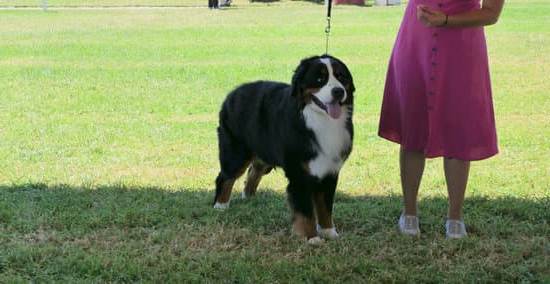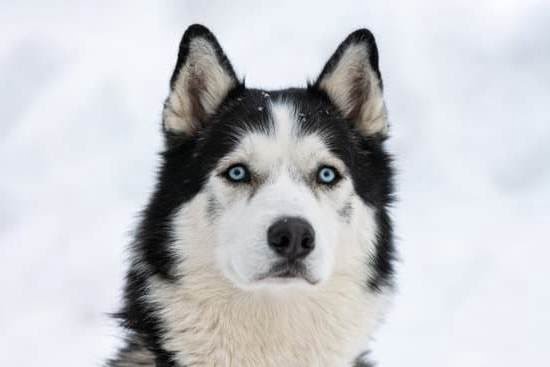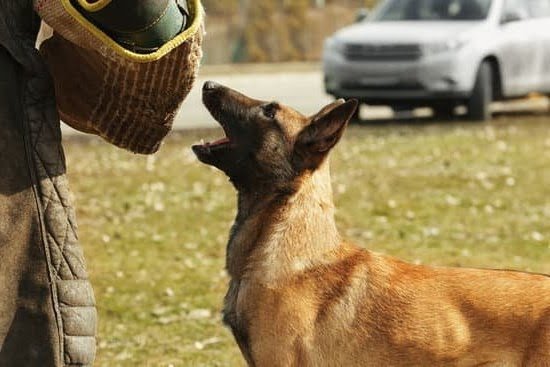Are you asking yourself, “how do I train my dog to leave chickens alone?” Understanding the prey drive in dogs is an essential first step in training your furry friend to coexist peacefully with chickens. Many dogs have a natural instinct to hunt and chase small animals, including chickens. This makes it crucial for dog owners to learn how to manage and redirect this behavior through proper training techniques.
The importance of training your dog to leave chickens alone cannot be overstated. Not only does it ensure the safety and well-being of your feathered friends, but it also promotes harmony within your household or farm. With the right approach, consistency, and patience, you can successfully teach your dog to respect the presence of chickens without succumbing to their predatory instincts.
One of the foundational elements of training your dog to leave chickens alone is incorporating basic obedience training. By establishing a strong foundation in obedience, such as sitting, staying, and recalling, you can effectively build on these skills when implementing specific commands related to leaving chickens alone. Additionally, positive reinforcement techniques play a key role in shaping your dog’s behavior and promoting a harmonious relationship between them and your chickens.
The Importance of Training Your Dog to Leave Chickens Alone
The prey drive in dogs is a natural instinct that compels them to chase and hunt small animals, such as chickens. This behavior can be challenging for dog owners, especially those who live on farms or have backyard chickens.
Training your dog to leave chickens alone is not only essential for the safety of the chickens, but also for the well-being of your dog. Understanding the prey drive in dogs is the first step in effectively training them to coexist peacefully with chickens.
Basic Obedience Training for Dogs
Before embarking on specialized training to leave chickens alone, it is important to ensure that your dog has a solid foundation in basic obedience. Commands such as sit, stay, come, and leave it are fundamental for controlling your dog’s behavior around livestock and other animals.
Introduction to the Leave It Command
The “leave it” command is an invaluable tool for teaching your dog to ignore certain objects, including chickens. Start by using the command with objects or treats that are not particularly tempting to your dog. Gradually increase the difficulty by using items that appeal more to their prey drive. Consistency and patience are key when teaching this command.
Using positive reinforcement techniques such as treats and praise when your dog successfully ignores the chickens will reinforce their good behavior. Remember that every dog is different, so finding what motivates your specific pup will be crucial in their training journey. Creating a controlled environment for training and gradually introducing your dog to live chickens will also be important steps in this process.
Basic Obedience Training for Dogs
When it comes to training your dog to leave chickens alone, it is essential to start with a strong foundation in basic obedience training. This includes commands such as sit, stay, come, and leave it. These commands are not only useful for everyday situations but also play a crucial role in ensuring the safety of other animals, including chickens, around your dog.
One of the first steps in basic obedience training is teaching your dog impulse control. Dogs have a natural prey drive, which can be instinctual when it comes to small animals like chickens. By teaching your dog basic obedience commands, you are helping them learn self-control and discipline. This will make it easier for them to understand and respond to commands related to leaving chickens alone.
The “leave it” command is particularly important when it comes to training your dog around chickens. This command can be used in various situations, not just with chickens but also with other tempting objects or animals. It is a powerful tool for redirecting your dog’s attention and preventing them from engaging in undesirable behaviors.
Positive reinforcement techniques are highly effective in basic obedience training. When your dog follows commands correctly, be sure to reward them with praise, treats, or toys. This positive association will motivate them to listen and obey in the future. Consistency and patience are key when using positive reinforcement methods.
| Basic Obedience Training Tips | Examples |
|---|---|
| Teach impulse control | Start by practicing the “stay” command around distractions |
| Use the “leave it” command | Show your dog a treat and cover it with your hand while saying “leave it” |
| Positive reinforcement | Reward your dog with treats and praise when they follow commands correctly |
Introduction to the Leave It Command
Training your dog to leave chickens alone is an important part of responsible pet ownership, especially if you have a backyard flock. One effective technique for achieving this is by introducing the “Leave It” command to your dog’s training repertoire.
Understanding the “Leave It” Command
The “Leave It” command is a valuable tool for teaching your dog self-control and helping them to resist the temptation to chase or harm other animals, including chickens. This command can be useful in a variety of situations beyond just interactions with chickens, making it an essential part of your dog’s obedience training.
Training Your Dog to Respond to the “Leave It” Command
To begin training your dog to respond to the “Leave It” command, start by using treats as positive reinforcement. Hold a treat in your closed fist and let your dog sniff or lick at it. When they eventually lose interest and look away, say “Leave It,” then reward them with a different treat from your other hand. Repeat this process several times until your dog begins to understand that “Leave It” means ignoring the initial temptation.
Applying the “Leave It” Command to Chickens
Once your dog has mastered responding to the “Leave It” command with treats, you can start using it in real-life scenarios with controlled interactions between your dog and chickens. Whenever your dog shows interest in the chickens, give the “Leave It” command and reward them for complying. Gradually increase the level of distraction (such as having a chicken move around) while practicing the command until your dog can reliably ignore the chickens when told to do so.
Positive Reinforcement Techniques for Training
Training your dog to leave chickens alone can be a challenging task, but using positive reinforcement techniques can make the process more effective and enjoyable for both you and your dog. Positive reinforcement involves rewarding your dog for good behavior, rather than punishing them for bad behavior.
This creates a positive association with the desired behavior and encourages your dog to repeat it. Here are some positive reinforcement techniques that can be useful in training your dog to leave chickens alone:
- Clicker training: Using a clicker to mark the moment your dog exhibits the desired behavior, followed by a reward, helps clarify which actions lead to a treat.
- Treat-based rewards: Offering high-value treats when your dog follows the leave it command around chickens reinforces the idea that leaving the birds alone is a positive action.
- Praise and affection: Verbal praise, petting, and other forms of affection can also serve as effective rewards for good behavior when working with your dog around chickens.
By consistently using these positive reinforcement techniques, you can help your dog understand that leaving chickens alone is a desirable behavior. This approach not only strengthens obedience but also fosters a closer bond between you and your furry companion.
Training in short, frequent sessions can help keep things interesting and prevent boredom or frustration for both you and your dog. Consistency is key – by consistently rewarding the desired behavior, you can effectively communicate what is expected of your dog regarding their behavior around chickens. So stay patient, persistent, and always keep training sessions fun and rewarding for optimal results.
Setting Up Controlled Environments for Training
When it comes to training your dog to leave chickens alone, setting up controlled environments for training is crucial. This step is important in ensuring that your dog can learn and adapt to the new behavior you want to instill. Here are some tips for setting up a controlled environment for training:
- Use a leash: When first introducing your dog to the chickens, always have them on a leash. This will allow you to have better control over your dog’s movements and prevent any unwanted interaction with the chickens.
- Secure the chickens: Make sure that the chickens are safely enclosed in their coop or pen during the training sessions. This will help prevent any potential harm to the chickens and create a safe space for both your dog and the chickens.
It’s important to create a calm and quiet environment when conducting training sessions with your dog. Minimize distractions, such as other animals or loud noises, that could cause your dog to become overly excited or agitated. By controlling the environment, you can create a focused atmosphere where your dog can learn and respond positively to your commands.
Remember that consistency is key when setting up controlled environments for training. By creating consistent training sessions in a controlled environment, you can effectively teach your dog to leave chickens alone and reduce their prey drive instincts. With patience and dedication, you can create a safe and harmonious relationship between your dog and your feathered friends.
By following these steps and being patient with the process, you can effectively train your dog to leave chickens alone and enjoy peace of mind knowing they will not harm any livestock.
Gradually Introducing the Dog to Chickens
When it comes to training your dog to leave chickens alone, gradual introduction is key. It’s important to remember that dogs have a natural prey drive, and chickens can trigger this instinct in many breeds. Gradual exposure to chickens in a controlled environment is essential for teaching your dog to be calm and obedient around them.
One of the first steps in this process is ensuring that your dog has already mastered basic obedience commands such as sit, stay, and come. This foundation will make it easier for your dog to understand and follow more advanced commands like “leave it” when it comes to the chickens.
Positive reinforcement techniques are also crucial during the gradual introduction phase. When your dog shows calm and non-aggressive behavior around the chickens, be sure to reward them with praise, treats, or toys. This will help them associate positive experiences with being near the chickens, reinforcing good behavior.
It’s also important for pet owners to always supervise their dog around chickens, especially during the initial stages of training. By keeping a watchful eye on your dog’s behavior and consistently enforcing training methods, you can ensure a safe and harmonious environment for both your beloved pets.
Troubleshooting Common Challenges in Training
When it comes to training your dog to leave chickens alone, there are a number of common challenges that may arise during the process. One of the most common challenges is getting your dog to consistently respond to the “leave it” command when around chickens. This is especially true if your dog has a strong prey drive or has had previous negative experiences with chickens.
To address this challenge, it’s important to focus on consistent and repetitive training. Practice the “leave it” command in a variety of environments and gradually introduce distractions, such as toy chickens or recorded chicken sounds, to simulate real-life scenarios. Additionally, using high-value treats or rewards can help reinforce the desired behavior and motivate your dog to listen to the command, even in the presence of chickens.
Another challenge that many dog owners encounter is managing their dog’s excitement or arousal around chickens. Some dogs may become overly excited at the sight or smell of chickens, making it difficult for them to focus on their training.
In these cases, it’s important to work on impulse control exercises and incorporate calming techniques into your training sessions. Teaching your dog a “settle” or “calm” command can be beneficial in helping them learn to remain composed when in the presence of chickens.
Lastly, some dogs may simply struggle with understanding what is expected of them when it comes to leaving chickens alone. This could be due to a lack of clear communication or inconsistent training methods. To troubleshoot this challenge, consider revisiting basic obedience training and strengthening your bond with your dog through positive reinforcement techniques. Consistency and patience will be key in overcoming these common challenges and successfully training your dog to leave chickens alone.
Keeping a Watchful Eye on Your Dog’s Behavior Around Chickens
When it comes to training your dog to leave chickens alone, one of the most important aspects is keeping a watchful eye on your dog’s behavior around the chickens. This step is crucial as it allows you to monitor your dog’s progress and intervene if necessary. By closely observing your dog’s interactions with the chickens, you can address any potential issues and ensure that the training is effective.
As you begin to introduce your dog to the chickens, it’s essential to supervise their interactions at all times. This means being present whenever your dog is in the vicinity of the chickens, especially during the initial stages of training. By doing so, you can quickly intervene if your dog shows any signs of predatory behavior or attempts to chase or harm the chickens.
Additionally, keeping a watchful eye on your dog’s behavior allows you to provide immediate feedback and reinforcement. When you observe positive behavior, such as ignoring the chickens or responding to the “leave it” command, you can reward your dog with praise and treats. On the other hand, if any negative behavior occurs, you can promptly correct it and redirect your dog’s attention towards more appropriate activities.
By maintaining close supervision and actively monitoring your dog’s behavior around the chickens, you can effectively guide their interactions and ensure that they continue to make progress in leaving the chickens alone. It also provides a valuable opportunity for bonding with your dog while reinforcing positive behaviors – ultimately leading to a harmonious relationship between your pet and backyard poultry.
Celebrating Success and Enjoying a Happy, Well-Trained Dog
After all the hard work and training, it is important to celebrate the success of effectively teaching your dog to leave chickens alone. It’s not always an easy task, but with patience and consistency, it can be achieved. Remember to praise your dog for their good behavior and continue to reinforce the training to ensure that they maintain their good habits. Ultimately, having a well-trained dog will lead to a more harmonious relationship with your pets and livestock.
One key aspect of successfully training your dog to leave chickens alone is understanding the prey drive in dogs. This knowledge will help you comprehend why your dog may be inclined to chase or harm chickens and how you can address this natural instinct through proper training techniques. By incorporating basic obedience training and positive reinforcement methods, you can effectively teach your dog to resist their instincts and behave appropriately around chickens.
It is essential to keep a watchful eye on your dog’s behavior around chickens even after they have been trained. Sometimes, dogs may regress in their behavior or act impulsively, especially if they are left unsupervised.
By being vigilant and proactive in addressing any concerning behaviors, you can ensure that your dog continues to respect the boundaries set during training. Overall, with dedication and commitment, you can successfully train your dog to leave chickens alone and enjoy a peaceful coexistence between all your animals.
Frequently Asked Questions
How Do I Stop My Dog From Being Obsessed With Chickens?
If your dog is obsessed with chickens, it’s important to address the behavior immediately. Start by supervising their interactions with the chickens and using positive reinforcement when they show calm behavior around them. Consider crate training or using a leash to control their access to the chickens.
How Do I Train My Dog to Ignore Chickens?
Training your dog to ignore chickens will take time and patience. Begin by teaching them basic commands such as “sit” and “stay” in a controlled environment, then gradually introduce the presence of chickens while reinforcing these commands. Consistency is key, so make sure to practice regularly and offer rewards for desired behavior.
How Do You Break a Dog From Getting Chickens?
Breaking a dog from getting chickens involves a combination of training, management, and possibly seeking professional help. Consider using deterrents such as noise or scent repellents around the chicken area. Additionally, providing mental and physical enrichment for your dog can redirect their focus away from the chickens. If necessary, consult a professional trainer for further guidance on modifying this behavior.

Welcome to the blog! I am a professional dog trainer and have been working with dogs for many years. In this blog, I will be discussing various topics related to dog training, including tips, tricks, and advice. I hope you find this information helpful and informative. Thanks for reading!





